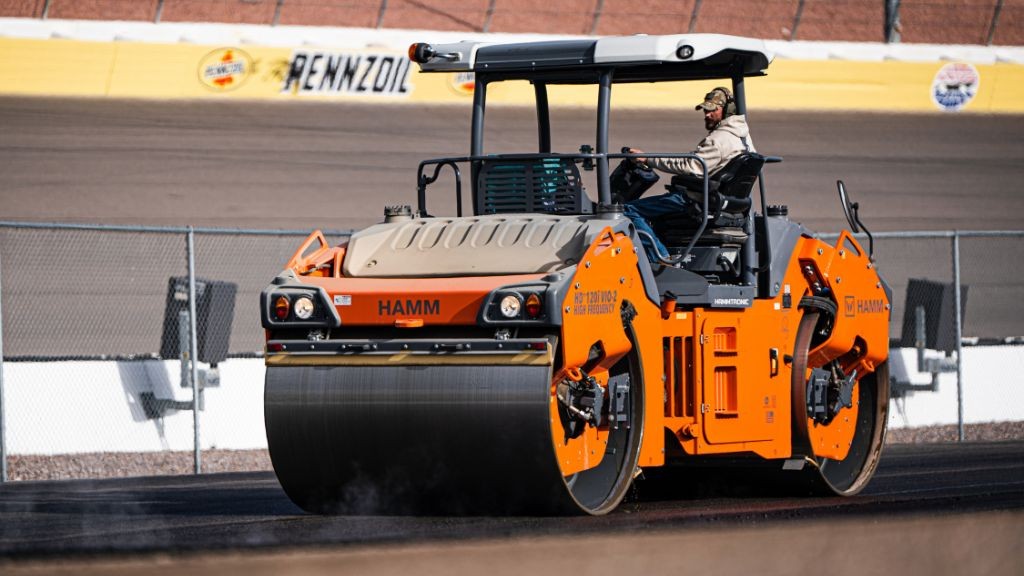The five rules of global parts distribution
How do you transport one of any 100,000 spare parts across the globe at any given time? Here we look at the intricate choreography Volvo Construction Equipment has perfected to ensure everything is in the right place at the right time.

If construction machines are the moving hands and feet of a contractor's operation, then its elaborate distribution network of spare parts is its backbone. For any construction equipment owner, machine uptime is at the core of keeping their business running smoothly. So when a helping hand is needed, Volvo CE steps up to complete the seemingly impossible task of providing all the right parts at the right place at the right time.
Jannicke Serneberg, Logistics Director, EMEA, at Volvo CE, says: "Nobody has a crystal ball – you simply cannot know where in the world and when a component might break down. But at Volvo CE, we have created a virtual crystal ball and taken a proactive approach to distribution."
Here we look at the 5 rules to ensure all these moving parts are kept on track.
1. Design high-quality parts
The first step to securing optimum uptime for customers is to ensure parts don't break down in the first place. By designing extremely high-quality parts that stand the test of time, customers don't have to worry about their machines failing on them in the middle of the job. Volvo CE tests and develop its own parts and products, including the engines, so almost every aspect of the machine is manufactured in-house to ensure top quality and easy availability.
Access to these quality parts is also made easy, even in the most remote locations. Mobile service stations, containing spare parts and on-site technicians, have been set up on far flung construction sites so that when even the most reliable parts reach their sell-by date, no time is wasted in replacing it.
2. Set up a strong network
To handle every potential distribution need, Volvo CE has implemented a strong logistics network to deliver to time and to budget. The organization oversees an international network of suppliers, parts purchasing, aftermarket purchasing, regional and local market logistics operations, warehouse managers, transport planning, material management and finally dealers and sub-dealers. Phew.
Take the EMEA region (Europe, Middle East and Africa) as an example. The region's storage facilities in Ghent, Belgium, are as large as 16 soccer fields. Each day, 60 trailers and 14 containers are loaded and sent out to up to 550 locations worldwide. With 345,000 spare parts available, there are over 1.2 million order lines handled each year.
Mr Torben Volder, IT and logistics manager of the Volvo Entreprenörmaskiner A/S, Denmark, said "For us, parts availability and the possibility of order and distribution are the most important things. It's the only way for us to deliver the high service our costumer expects and securer uptime for our customer's Volvo machines."
3. Be smart with technology
Over time, distribution has become a lot more sophisticated than just physically moving something from point A to point B. So once that network is set up, it needs to be able to handle huge amounts of data and communicate that data in the most efficient way possible. Virtually integrating the whole supply chain – and aligning all departments with the same stock management systems – enables Volvo CE to have real-time insights into production times, analyze the quickest transport routes and track each delivery through connected GPS systems.
Access to Big Data can help with that virtual crystal ball. Jannicke adds: "We look at the market and machine population, analyze machine utilization trends and make calculated assumptions about what parts might be needed where and when based on all this information."
4. Prioritize every order
Each customer request for a spare part is classed according to need. A first class "machine down" order, where a machine is taken out of action until the part can be replaced, is considered the top priority. In these cases, parts can be delivered in as little as 12 hours. Next in line are second class orders where customers are preparing for a bigger overhaul, followed by discounted classes where customers do not require parts to arrive as soon as the next day.
The process of prioritizing every order is not possible without strong channels of communication – both with the customer and with other departments. Every week the logistics team based at Volvo CE's Uptime Center – based in Eskilstuna, Sweden, for the EMEA region – oversees strategy meetings with warehouse, material management, purchasing, planning and transport teams in order to plan its overall service. This allows distribution centers to more easily plan the comings and goings of parts, reducing costs for everyone involved.
5. Plan low-carbon transportation
Anyone involved in logistics is well aware of the environmental challenge of delivering parts to the most remote locations. But for a company like Volvo CE, where sustainability remains one of its core values, it is able to reduce its carbon impact by calling upon its sprawling network of storage facilities across the world. The company's huge global footprint means customers do not have to travel far to find local replacement parts. But if longer haul transport is required, Volvo CE will opt for the most low-carbon transportation routes.
"The world is evolving fast and the demands on distribution are growing every day," says Jannicke. "But these demands are what push us to be more innovative with the way we work. Distribution has been under the radar in the past but it really is the heart of a business' operation. After all you don't call up when you get your parts on time, but you do when you don't."



